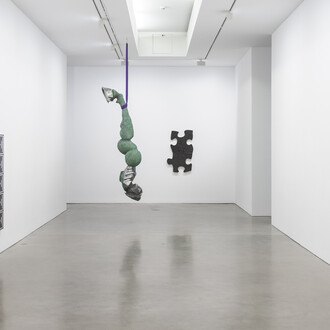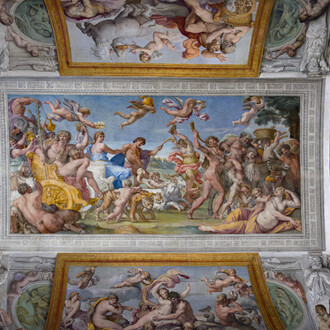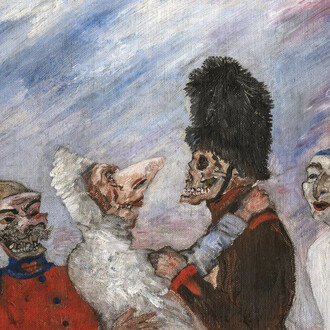Erarta Galleries London presents Place: St. Petersburg an exhibition by Valery Valran. The home of the Erarta Museum and the chosen home of Valran since 1966, the exhibition shows St. Petersburg as a unique protagonist in Valran’s ethereal painting practice. To coincide with the winter edition of Russian Art Week, Erarta Galleries London transports you to the enchanted St. Petersburg of Valran’s vision.
Valran’s St. Petersburg is mysterious. His is a city that is both incredibly clear and detailed, rendered with the exactitude of a technical drawing, but one that is completely empty and completely still. There are no details of everyday life; this is a city purified in which architecture stands for culture and nature – the water, the trees – is the character. Drained of colour to the extent that his cityscapes are almost monochromes, Valran presents the viewer with the St. Petersburg of his inner vision, a city held together by a network of waterways, in which the solid buildings and grand squares become fluid. By painting St. Petersburg thus, Valran has created an illusion of the real place, an ode to Dostoevsky’s Petersburg, “The most abstract and intentional city in the world.” A doctor of psychology, the constructed classical harmony of Valran’s cityscapes call to mind Platonic ideals and Jungian archetypes, but it is unclear whether what he presents to the viewer is the real city or a watery reflection. Either way, there is an autonomy to Valran’s St. Petersburg, one that is clearly declared in perfect balance and exaggerated emptiness.
Like his cityscapes, Valran’s still life paintings are free from excess. They show the same distillation of visual imagery and commitment to essentialism, and water, so prominent a feature in the cityscapes, becomes the ground in which the objects float. Where Valran’s cityscapes are illusions of real places, his still life paintings show real objects in an illusory spatial plane. In both the cityscapes and the still life paintings Valran eliminates darkness. In this way St. Petersburg becomes all but transparent, while his carefully selected objects are divorced from their shadows and left free to float in an undefined, aqueous space. Without an environment to ground them, the objects he selects take on a Gogolian freedom, and one can easily imagine the bottles, eggs, bread hoping to find their place in one of his minutely rendered, aqueous buildings.
In all Valran’s work there is a clear seriousness and directness of thought. He presents St. Petersburg refined, rarefied, and essential, a place for the viewer alone. Similarly, the objects in his still life paintings are so focused in their absolute separateness and yet so universal, that their only relationship is that with the viewer. Place: St. Petersburg, as presented by Valery Valran, is a place for quiet introspection and submersion.
Valery Valran was born in the Ukhtinusky Region in 1949. In 1966 he moved to St. Petersburg to study mathematics, and later transferred to the Department of Psychology, attaining a Ph.D. Always interested in the arts, Valran was involved in artistic communities in St. Petersburg from 1972. Since his first exhibition in 1976, Valran has participated in more than 100 exhibitions in Russia, Germany, Switzerland, the USA, and the UK.
Erarta Galleries
8 Berkeley Street
London W1J 8DN United Kingdom
Ph. +44 (0) 20 74997861
london@erartagalleries.com
www.erartagalleries.com
Opening hours
Tuesday - Friday from 10am to 6pm
Saturday from 10am to 5pm
Monday by appointment
Related images
- Valran, Resting Nympth, 1993. Oil on canvas 120 x 100cm
- Valran, Bottle. Egg. Apple. Skull., 1987. Oil on canvas 100 x 75cm
- Valran, Fontanka, Chernyshov's Bridge, 2003. Oil on canvas 140 x 110cm










